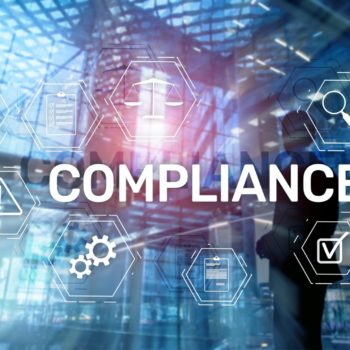Here at JVR Consultancy, we have a reputation as one of the United Kingdom’s most reputable and accomplished compliance advisory consultancies.
The number of cyber-attacks is increasing. As a result of the epidemic, online activity has increased dramatically, creating the ideal environment for a large number of cyber-attacks to take place.

In just the first quarter of 2020, the number of cyber-attacks against UK firms increased by a whopping 30 percent, with banks and healthcare organisations accounting for 27 percent of all attacks. As a result, cybersecurity has emerged as a critical concern for businesses at all stages of development. It is even more concerning to consider the fact that cyber-attacks might take a variety of various forms, requiring a variety of different combat strategies. So, what exactly should you be on the lookout for, and how can you safeguard your company?
Here’s what you need to know about four of the most dangerous and destructive types of cyber attack.
1. Malware infection
Malware is the term used to describe hostile or hazardous entities that infiltrate a network by exploiting a flaw or vulnerability. Worms, polymorphic and stealth viruses, file infectors, spyware, trojans, and ransomware are examples of malicious software that can infect a computer. Their primary method of gaining access to a network is through the user clicking on an email attachment or link, which then instals them and causes damage to your information in a variety of ways. Ransomware, for example, might prevent you from accessing crucial sections of your network until you pay a ransom. Because it interferes with specific operations, this malicious software has the ability to install other destructive components and leave your system useless as a result. Malware, such as spyware, is also responsible for stealing data from the hard drive invisibly and secretly.
One of the most effective ways to lower your chance of malware infection is to keep your anti-virus, operating system, browser, and plugins all up to date. Also, go through your programme collection and get rid of anything you don’t use. Attempting to restrict the amount of online operations that are not relevant to the business is a good idea for organisations.
2. Phishing (also known as spear phishing)
This type of assault is most commonly carried out via email and targets personal information of the victim. It entails sending emails that appear to come from a reputable source but, upon closer scrutiny, turn out to be false. Some types of phishing involve the installation of malware on your computer through the use of a link or file, while others involve the use of links that take you to websites that attempt to deceive you into providing personal data.
When it comes to phishing, spear-phishing is a highly targeted form of the activity in which the attacker conducts more research into their target and generates messages that are relevant and personal to them. It becomes easier to bait people in this manner, which makes it even more difficult to detect such attacks. Attackers can do this through the use of email spoofing, in which they misrepresent information in the ‘From’ part of an email to make it appear authentic. Another method of appearing more real is to copy legitimate websites and use them to deceive you into providing personal information.
You may lessen the likelihood of being targeted by phishing attacks by thoroughly reviewing all emails before opening them. Also, give yourself some extra time before clicking on links and hovering over them to see where they will take you before proceeding.
3. Targeted rapid fire attack
In this form of attack, a hacker searches for weak or vulnerable websites and inserts harmful scripts into the PHP or HTTP code of the target website. When a visitor visits the page, the script either sends them to a site controlled by the attackers or instals malware on their computer, depending on the situation. Additionally, you can become a victim just by opening a pop-up window or receiving an email, without taking any action to authorise the assault, which increases the danger even further.
Because obsolete operating systems and security holes are the most significant risk factors in this attack, it is essential to ensure that all of them are thoroughly examined and corrected. Additionally, make every effort to keep the amount of plug-ins used in your business procedures to a minimum, as this may expose you to even greater risk.
4. Password security
When a cybersecurity breach occurs, the attacker attempts to figure out your passwords in order to gain access to your information. They accomplish this by guessing passwords, employing social engineering techniques, or poking around the network connection in search of unencrypted passwords. There are two ways to make educated guesses. The first method is brute-force attack, which is a random way of trying out multiple passwords, most of which are related to the victim’s name, work title, or other personal information. The second way, known as the dictionary method, involves trying a variety of popular passwords in the hopes of finding one that matches.
Implementing a lockout mechanism, in which your accounts are locked after a certain number of failed login attempts, can help you avoid password attacks. It is also recommended that if you are offered multiple-step verification procedures when creating an account, you select that option because it is more secure than the alternative.
The consequences of failing to take cybersecurity seriously are severe, particularly for enterprises, to the point where it could lead to the company’s demise entirely. To be more specific, the average cost of dealing with cyber-attacks is approximately $1.1 million, which is money that could be utilised to improve other elements of a company’s operations in order to generate some profit. Even if the organisation does not suffer a financial loss, it can have a devastating impact on its reputation, as clients will come to believe that they cannot trust you with their private information. Making the initial expenditure in order to protect your company’s internet presence is vitally necessary.
What JVR Consultancy Can Do to Assist You
All of the issues listed above may appear to be hard, but they are fundamental security issues that are simple to resolve. With the help of JVR Consultancy, you can equip yourself to take your company’s security to the next level by being assessed and certified as a Cyber Essentials qualified professional.
Cyber Essentials is sponsored by the government, which is why it’s critical to get in touch with us as soon as possible for a free audit of your present systems and a road map for how to proceed in the most effective way for you. As one of just a handful of consultancies in the United Kingdom to be recognised by the IASME Consortium in cooperation with the National Cyber Security Centre, we can evaluate and certify your application.
Please get in touch with us right away to arrange your free Cyber check.
Frequently Asked Questions from our Customers
Yes we can, we can assist you with any of the accreditation featured on our website. We have a 100% record of securing any of the accreditation in the first audit for all our customers for the last 13 years.
More to the point, I ask clients how quickly can you start. We can have a consultant working on your accreditation within the hour if you are ready. The only things that take time are the audit dates, these are issued to the client by the certification body so it is out of our control.
This depends on how much the client has in place already. The more they have, the easier it becomes to work on their accreditation. The gap analysis that we carry out is free of charge and afterwards will give you an exact fixed price.
The fixed price will include the following –
- Carry out all the work ( creating documents & processes tailored to your company )
- Attend the audit ( as your expert consultant ) or make the desktop submission.
- Make any corrections that the auditor may highlight to ensure that you obtain your accreditation the first audit.
Initially, we need to talk to you to carry out the free gap analysis. Afterwards, we would require you to forward all the relevant documents. After that, we can complete the work with the minimum of your input, leaving you to concentrate on doing what you do best for the company.
Yes! Let us Manage your Accreditations with Ongoing Support and Maintenance. With us managing your accreditations, your team can then focus on business growth and development. This gives you peace of mind knowing your compliance is being routinely managed by professionals. Ongoing support and maintenance avoids panic in your business when suddenly faced with an audit, knowing at all times you are well prepared.
Achieve Accreditation and Compliance with JVR
JVR Consultancy was formed in the year 2008 and their head office is based in Windsor and Maidenhead. We noticed that there was a gap in the market, for companies who work in the construction, rail, utilities, oil and gas sector who were not fully supported in the way that they could be when it came to industry compliance and certification. That is why our highly experienced team of compliance consultants can serve these sectors by providing over 135 years of combined experience with all compliance needs. In short, you won’t find anyone else who cares as much, or who tries as hard as we do.
Speak with one of our experienced consultants. At JVR, we know that time is precious, and you want the answers to your questions quickly, especially during an audit!. Once we speak with you for the first time over the phone, we need around 10 minutes to fully evaluate which accreditation you need support with and a brief introduction into you and your company.
Our consultants have an extensive level of experience in developing solutions and offering guidance for our clients and their businesses. We offer a free GAP analysis, which will help to assess the difference between your business performance and your goals. It’s a fantastic way for you to find out if your business needs are met, and if they aren’t, it gives you the insight and confidence you need to deliver improvement before an audit. Learning more about what is Gap Analysis and how will the report benefit you.
With a success rate of 100% and a team who will go above and beyond to make sure that your expectations are met, you know that you can trust in us to provide you with the knowledge, resources and expertise you need to make a difference. Contact us today to find out more.
To identify the objectives and benefits that are needed to achieve your desired level of compliance, we offer a FREE, no-obligation Gap Analysis. Our analysis will assess your current systems and documentation. Just start your journey by filling in the form below, and one of our specialists will contact you (typically within one working day) to make arrangements.
Nationwide Presence
26 national support locations throughout the UK. See Office Locations.
Fixed Fee Payments
There are no hidden charges, and what you see is what you pay.
Free Gap Analysis
Assess the difference between your business performance & your goals.
Audit Support
Supporting businesses with upcoming compliance audits. FAST TRACK priority support also available.
Ongoing Support
JVR offer Ongoing Support & Maintenance for peace of mind.
Customer Service
Our customer reviews are a testament to our work & the results we achieve.
Experience
Vast experience in developing compliant integrated management systems
Thorough Process
We write procedures, policies & associated documentation.
Bespoke
Our services are tailored to meet individual company requirements.
Audit Support
Get FAST TRACK Audit Support with JVR Consultancy Today. Click here to find out more.
Free Remote Gap Analysis
Book a Free Remote Gap Analysis during Covid-19 for your business. To learn more, why not read our What is Gap Analysis blog article and understand how a Gap report would benefit your company.
Related Articles
More reasons to choose JVR Consultancy for Compliance & Risk Management









